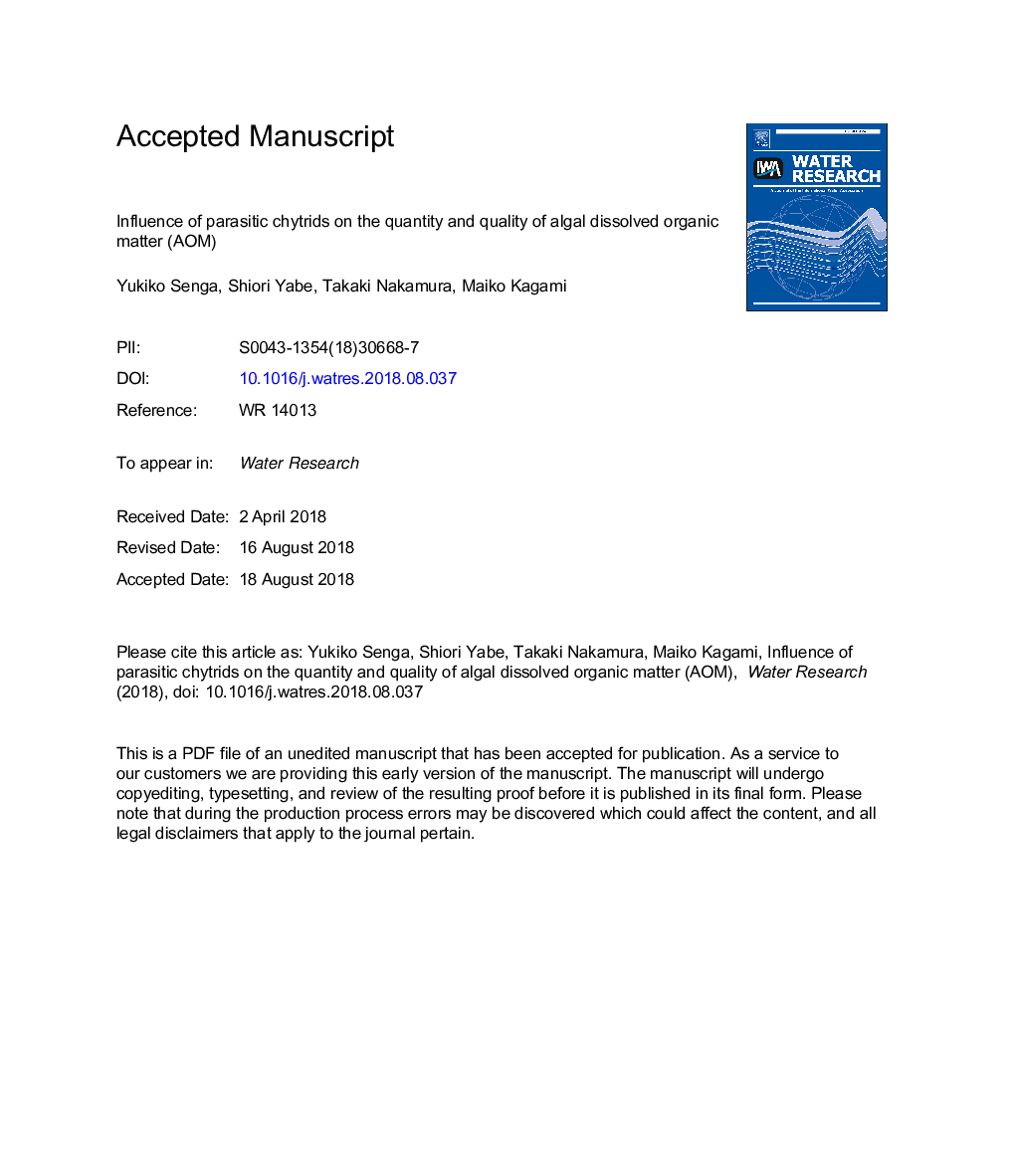| Article ID | Journal | Published Year | Pages | File Type |
|---|---|---|---|---|
| 10115935 | Water Research | 2018 | 37 Pages |
Abstract
Algae-derived dissolved organic matter (AOM) is an important nutrient source for heterotrophic bacteria, while AOM such as humic substances pose significant challenges during water treatment processing. We hypothesized that the parasitic infection of algae could change the composition and concentration of AOM. This study investigated the quality and quantity of DOM and bacterial abundance in diatom (Synedra) cultures, with and without parasitic fungi (chytrids). The quality of DOM was analyzed using three-dimensional excitation-emission matrix combined with parallel factor analysis (EEM-PARAFAC) and was compared to changes in algal and bacterial cell numbers. Bacterial abundance was higher and dissolved organic carbon concentrations were lower in the diatom cultures infected with parasitic fungi. Among the DOM compounds, the concentrations of tryptophan-like material derived from algae were significantly lower and the concentrations of humic substance-like material were higher in the infected treatment. The parasitic fungi may have consumed tryptophan-like material and stimulated the release of humic substances. These results provide the first evidence that fungal infection may modulate algal-bacterial interactions, which are associated with changes in the nature of AOM.
Related Topics
Physical Sciences and Engineering
Earth and Planetary Sciences
Earth-Surface Processes
Authors
Yukiko Senga, Shiori Yabe, Takaki Nakamura, Maiko Kagami,
